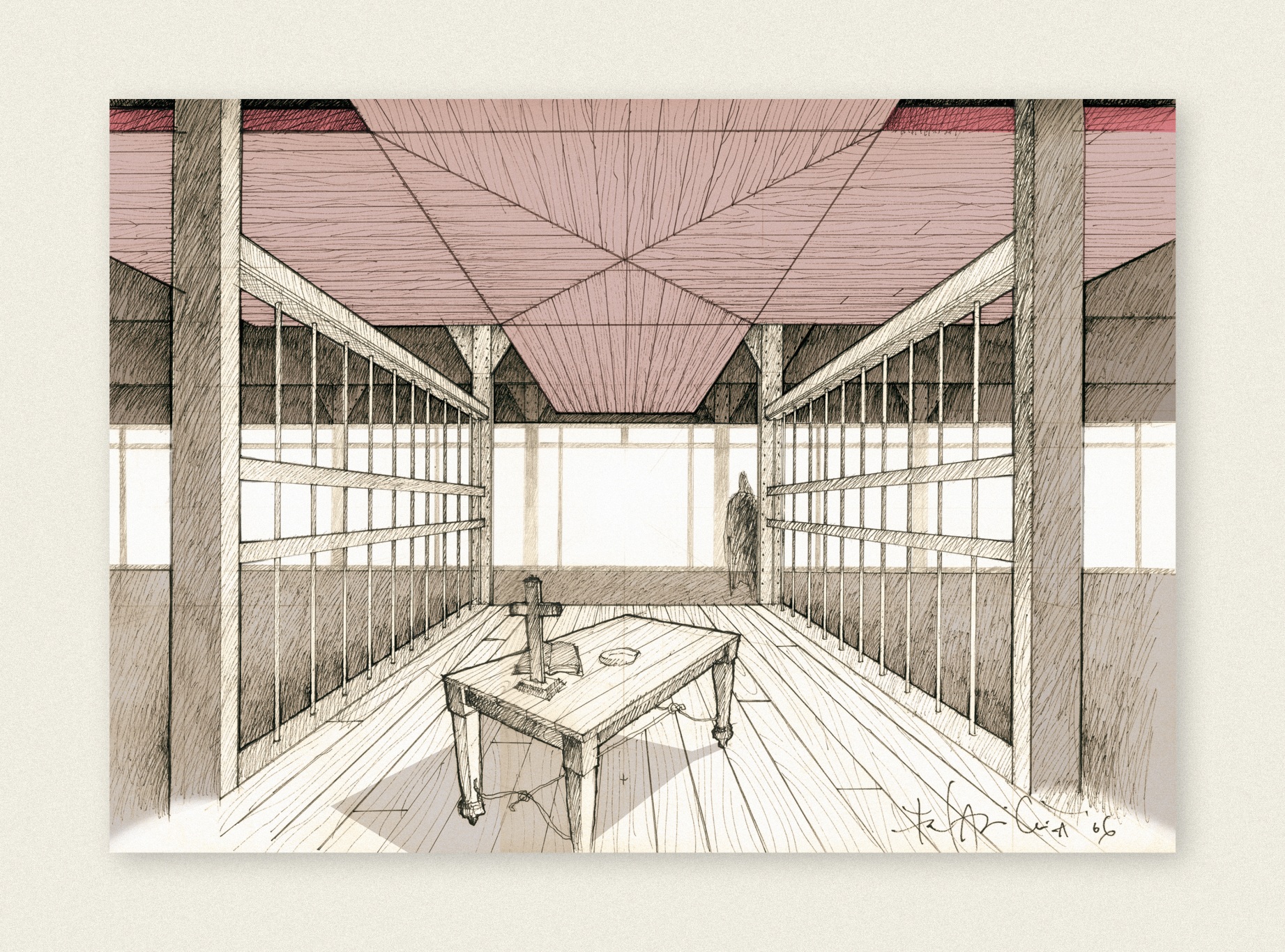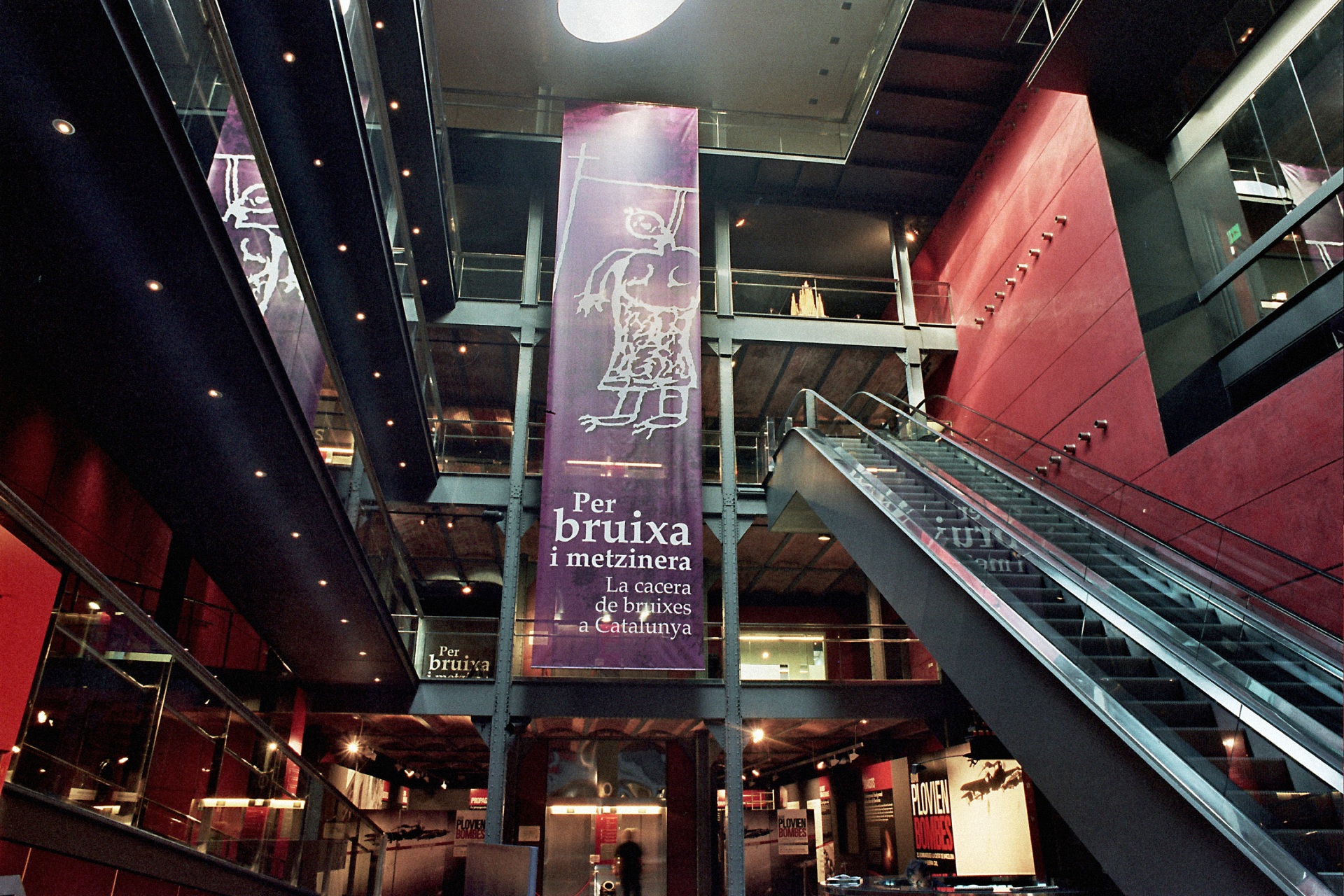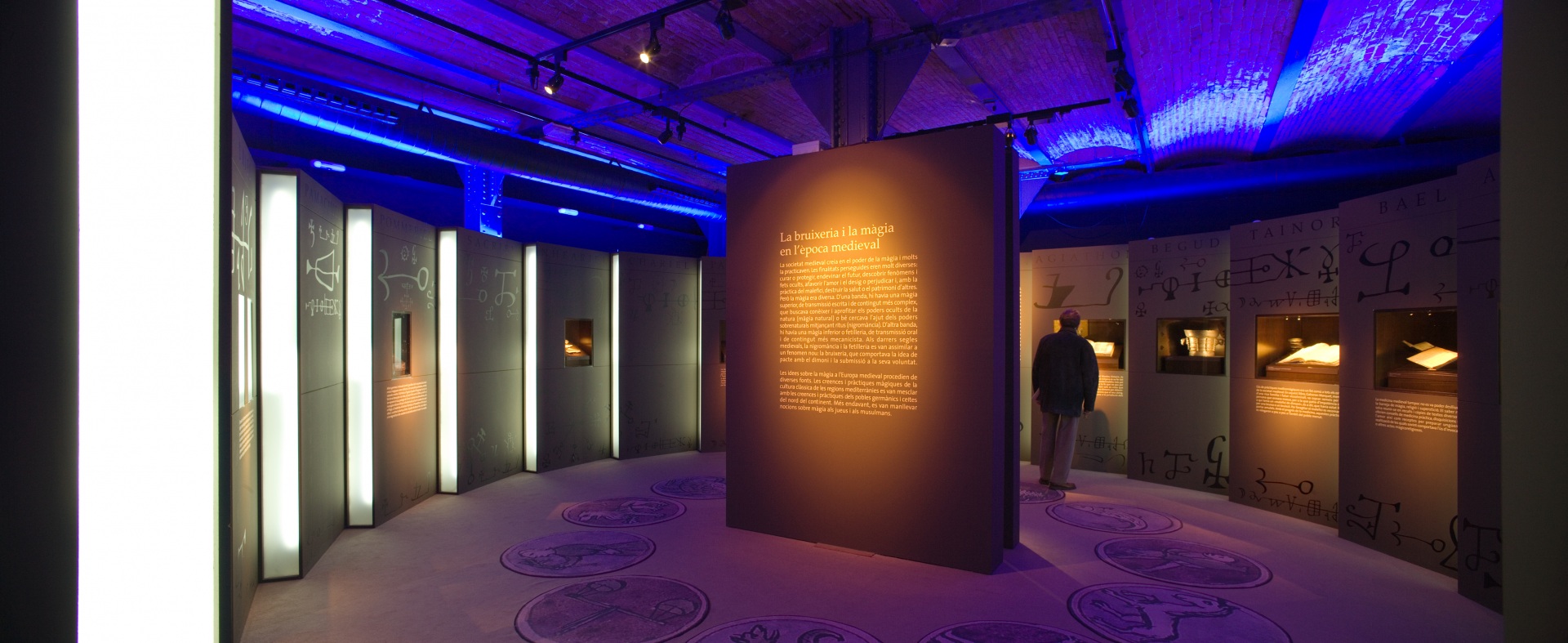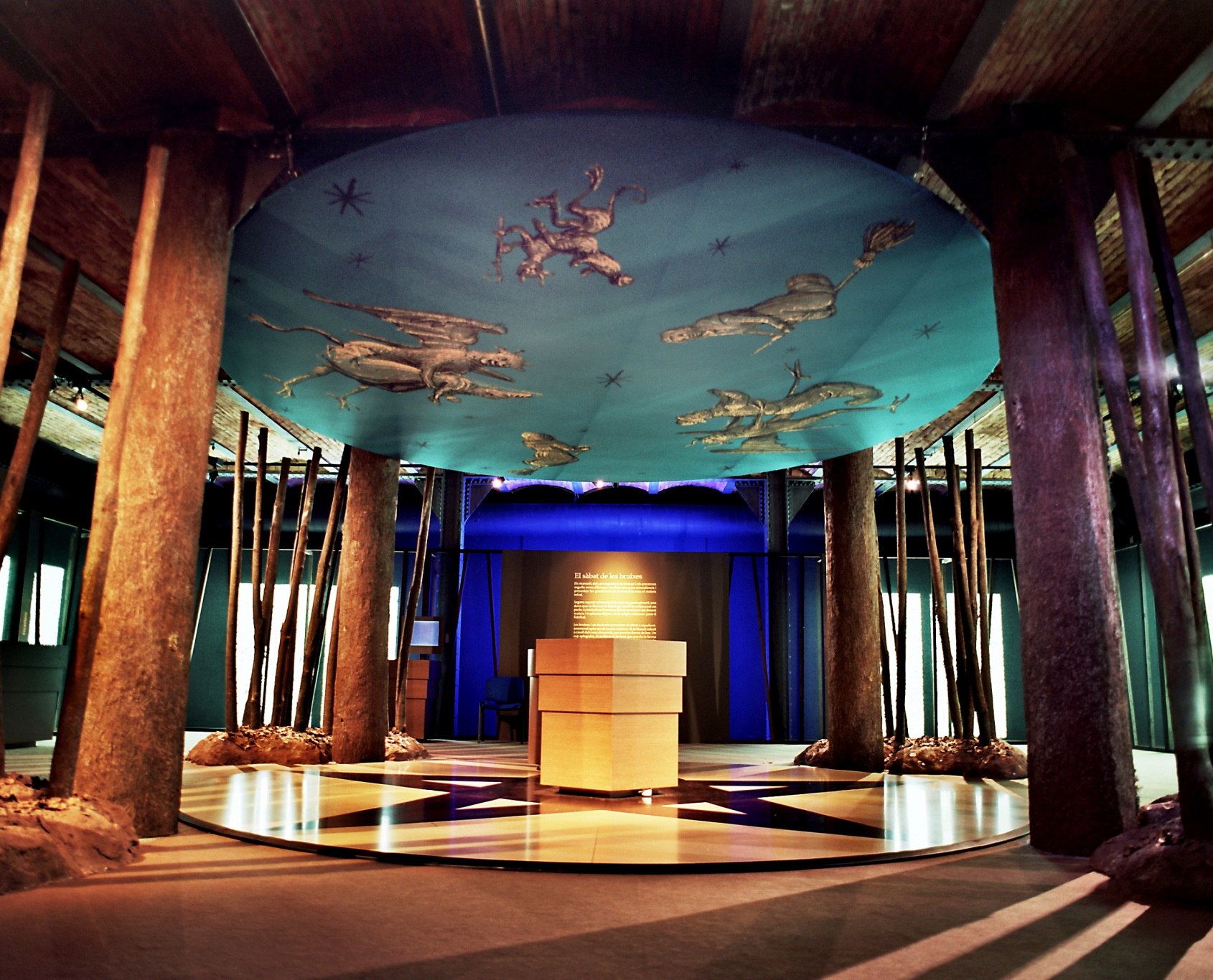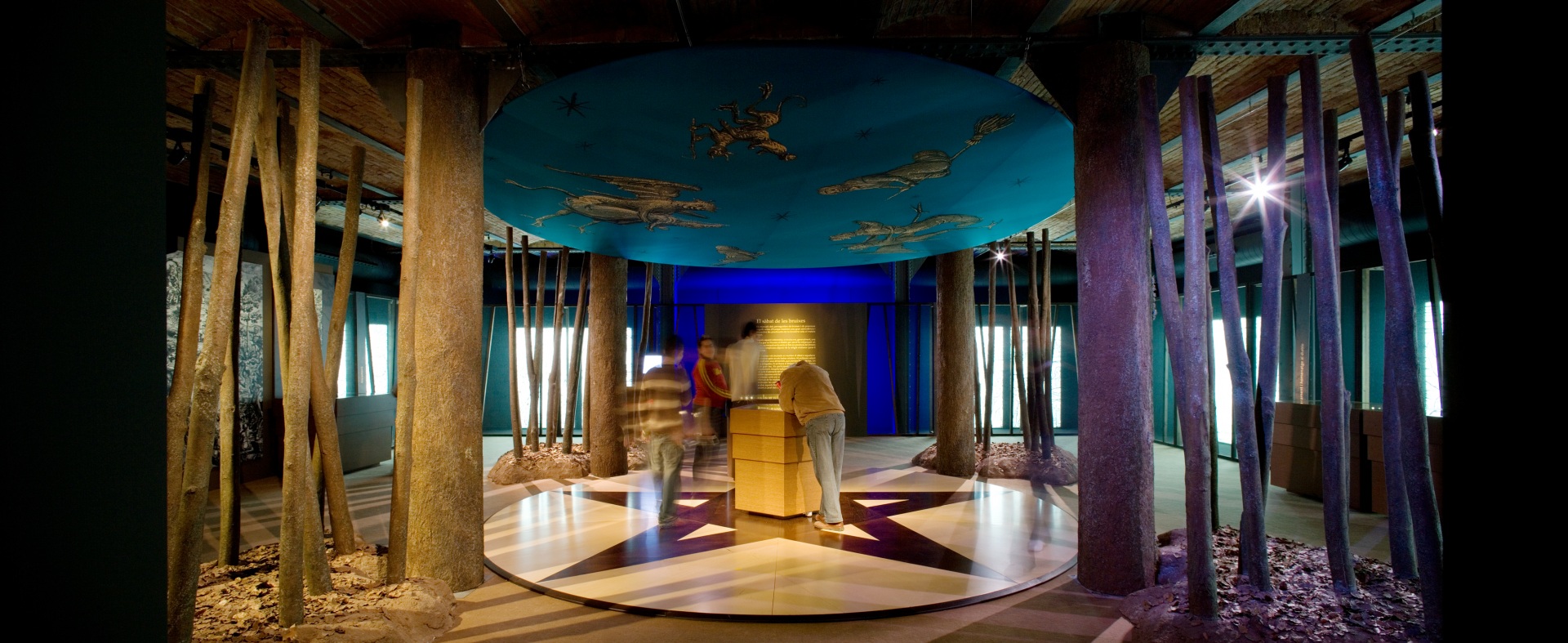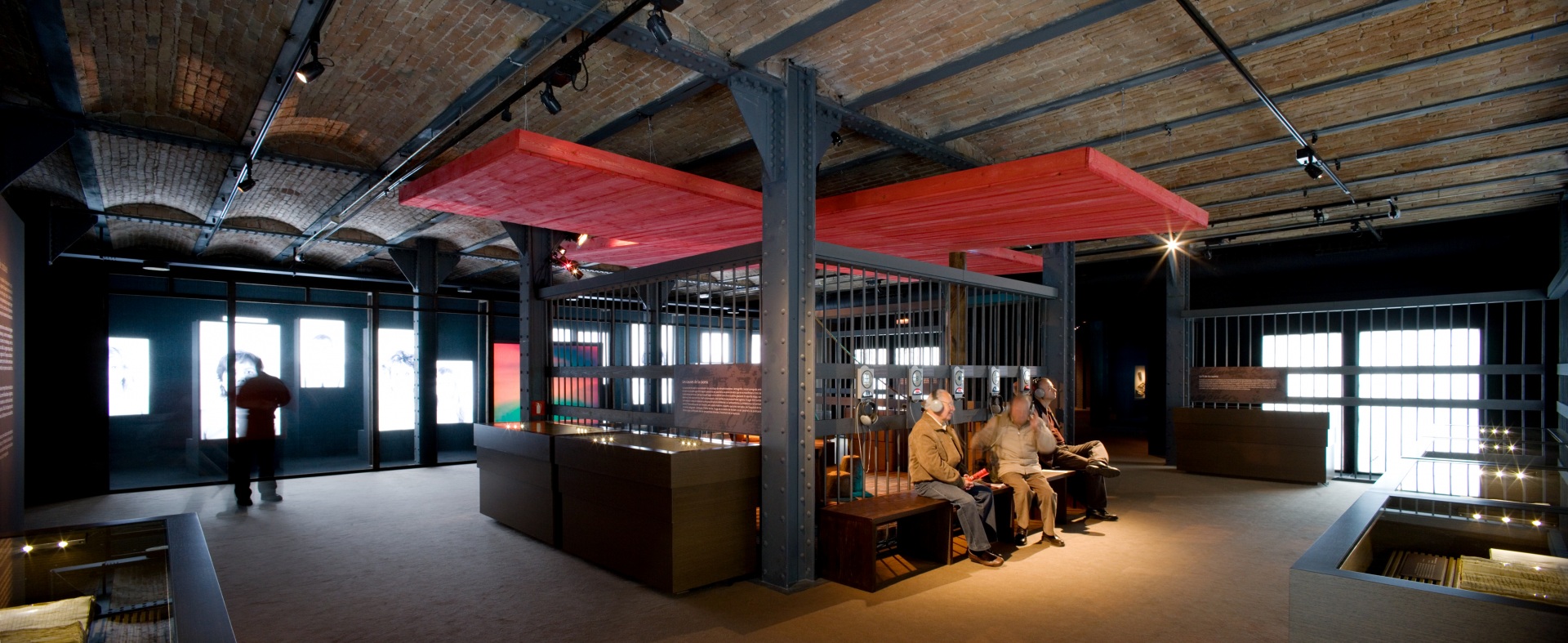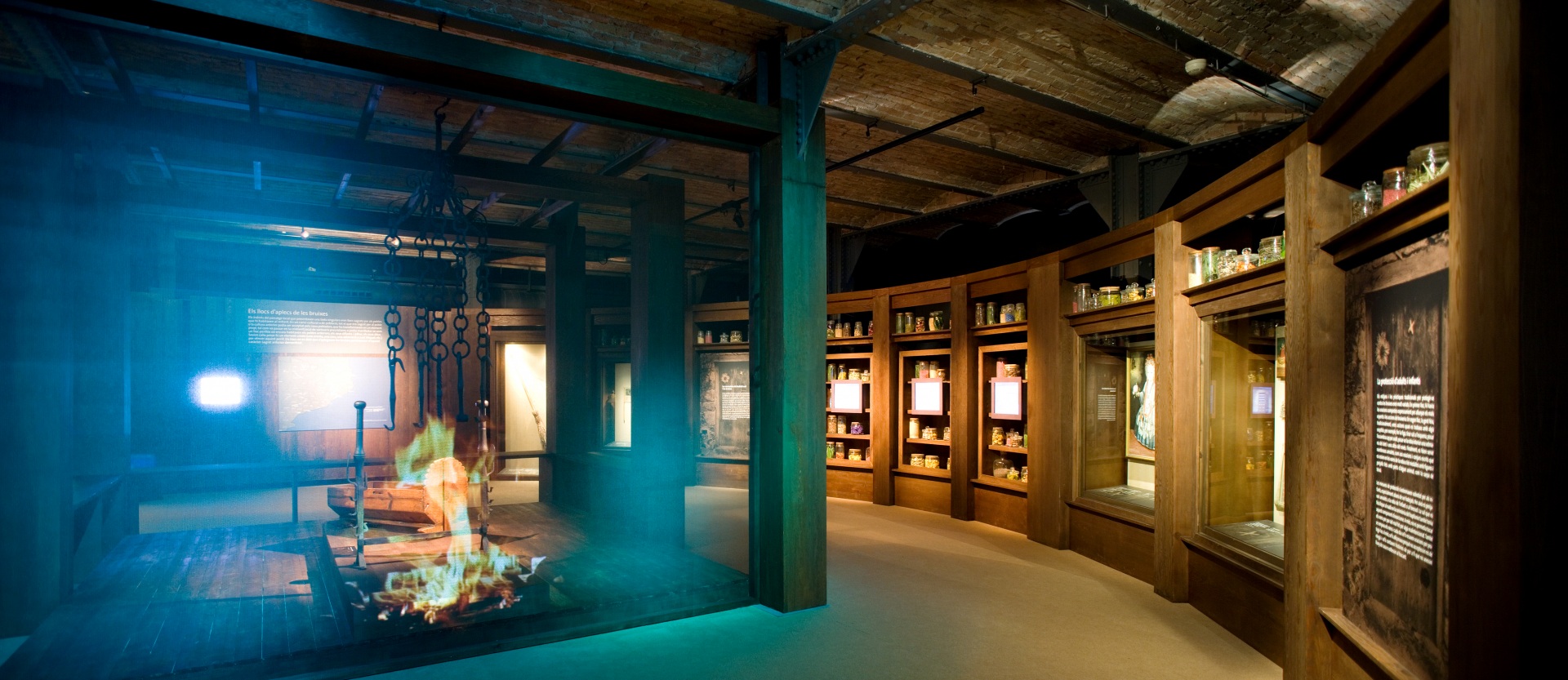Exhibition on the origins of witchcraft, its legendary character, and the beginning of witch hunts, as well as the torture methods that were used on people convicted of this alleged crime.
This exhibition was pioneering and unique in Catalonia and in Spain. More than a hundred pieces were exhibited, in a total area spanning 1,000 square meters. Most of the pieces, however, were old books. As such, the staging had to be able to draw visitors in and help them to visualize the origins and the stereotypes surrounding the figure of the witch, as well as the violent scenes of the hunts to which they were subjected.
The first room was dedicated to the birth of witchcraft, remedies, curses, etc. A circular geometry, closely associated with magic, acts as a common thread throughout the visit. In this case, it represents the signs of the zodiac and symbols that represent the names of demons. The next object on display, juxtaposed with representations of hell, was the Malleus Maleficarum, the codex that laid the foundations for the persecution and condemnation of witches, which describes all the supposed sinful acts and rites of witchcraft. This room leads to the site where all these ceremonies took place: a forest clearing. There is an altar above a pentagram, and a sky made from the enlargement of one of the miniatures on exhibit that shows witches in full flight on their brooms. The columns in the room, as in the rest of the exhibition, are integrated into the set design: in this case emulating the trunks of the trees.
After attending the rite, we continue on to a room that represents the capture and torture of these witches. A red cross and prison bars organize this space, which contains audio fragments that describe the torments, and an audio-visual display that explains who these people really were: smart women (and sometimes men), who disagreed with the political or religious authorities, punished for their courage, for their independence, for refusing to submit to the strict norms of society. Finally, the exhibition closes with a trip through popular memory, based on fables and recollections. Alongside the pieces on exhibit and the scenographic elements, interactive displays let visitors prepare different potions. The centre of the room is occupied by a fireplace, around which the stories can be heard, deformed and embellished by time, today little more than legends.
Institutional sponsor: Museu d’Història de Catalunya
Location: Barcelona, Catalonia
© Photography: Pepo Segura
© Drawings: Ignasi Cristià i Garcia



